#Bengal news in hindi
Explore tagged Tumblr posts
Text
मौसम विभाग ने जारी की चेतावनी, बंगाल की खाड़ी में बना डीप डिप्रेशन, चक्रवात बनने की संभावना
भारत के मौसम विभाग (IMD) ने 27 नवंबर 2024 को दोपहर 1:20 बजे एक महत्वपूर्ण बुलेटिन जारी किया, जिसमें बताया गया कि दक्षिण-पश्चिम बंगाल की खाड़ी के ऊपर बना डीप डिप्रेशन पिछले 6 घंटों में उत्तर-पश्चिम की ओर ब��़ रहा है। इस दौरान इसकी गति 13 किलोमीटर प्रति घंटे की रही है। यह डीप डिप्रेशन त्रिंकोमाली से 120 किमी दक्षिण-पूर्व, नागपट्टिनम से 370 किमी दक्षिण-पूर्व और पुडुचेरी से 470 किमी दक्षिण-पूर्व स्थित…
#chennai rains#chennai weather today#Cyclone fengal#Cyclone forecast and fishermen advisory#Cyclone formation in November 2024#Deep Depression in Bay of Bengal#Heavy rain in Andhra Pradesh and Tamil Nadu#IMD weather alert India#IMD weather updates for coastal regions#Khabar Junction Hindi News#Khabar Junction News in Hindi#rain in chennai#tamil nadu heavy rainfall#Tamil Nadu heavy rainfall warning#tomorrow weather#Weather#weather chennai#weather forecast#weather in chennai
0 notes
Text
https://bolebharat.com/kolkata-rape-murder-case-23-died-during-doctors-strike-supreme-court-asked-them-to-return-to-work-orders-to-remove-victim-photos-from-social-media/india/

The Supreme Court bench expressed serious concern over the absence of documents related to transfer of body for post-mortem in a rape and murder case and slammed the Kolkata government. The bench has asked CBI to investigate the matter.
0 notes
Text
Maharashtra News: ठाणे में बर्थ डे पार्टी में सहेली ने युवती को नशा पिलाकर करवाया रेप, सहेली समेत तीन गिरफ्तार
Maharashtra News: ठाणे में बर्थ डे पार्टी में सहेली ने युवती को नशा पिलाकर करवाया रेप, सहेली समेत तीन गिरफ्तार #news #viral #trending #update #newspaper #breakingnews #currentaffairs #dailynews #newsletter #newspapers #newsupdate #People #Media #info
Maharashtra News: महाराष्ट्र ���े ठाणे जिले में एक युवती के साथ जन्मदिन की पार्टी में दुष्कर्म का मामला सामने आया है। युवती अपने दोस्त के घर उसके जन्मदिन पर गई थी। जन्मदिन की पार्टी के दौरान पीड़िता को पहले नशीला पदार्थ देकर बेहोश किया गया और फिर दुष्कर्म की वारदात को अंजा�� दिया गया। पुलिस ने नशीला पदार्थ देकर दुष्कर्म करने के आरोप में एक महिला समेत तीन लोगों को गिरफ्तार किया है। एक पुलिस अधिकारी…
#bbc news#Bengal news#birthday party#Breaking News#doctor rape and murder news#english news#friend drugged#girl#Hindi News#india today news#Kolkata Doctor News#kolkata doctor rape news#Kolkata news#kolkata protest news#kolkata rape news#kolkata rape news live#Latest News#madhya pradesh rape news#maharashtra news#mp news#mp news live#News#rape#rape in ujjain news#thane news#top news#Ujjain News#ujjain rape case latest news#ujjain rape news#us news
0 notes
Text
‘Maa Kaali’ teaser reveals brutalities faced by Hindus in 1946 Bengal
The teaser for Maa Kaali has been released that presents often overlooked history of the Direct Action Day and the Naokhali Massacres. Produced by People Media Factory and directed by Vijay Yelakanti, the film stars Raima Sen and Abhishek Singh. According to reports, the film revisits the tragic events that contributed to the partition of India and left a profound impact on Bengal. Set for…
#Bengal#Bengali#film#Hindi Films#Hindus#Maa Kaali#Movie News#Movies#News#News Entertainment#Raima Sen
0 notes
Text
ममता ने प्रधानमंत्री से NEET को खत्म करने और पुरानी व्यवस्था बहाल करने का आग्रह किया
प्रतिरूप फोटो ANI पश्चिम बंगाल की मुख्यमंत्री ममता बनर्जी ने सोमवार को प्रधानमंत्री नरेन्द्र मोदी को पत्र लिख आग्रह किया कि ‘पेपर लीक’ विवाद को देखते हुए राष्ट्रीय पात्रता सह प्रवेश परीक्षा (नीट) को खत्म करने और राज्यों द्वारा परीक्षा आयोजित करने की पुरानी प्रणाली बहाल करने पर विचार किया जाए। कोलकाता। पश्चिम बंगाल की मुख्यमंत्री ममता बनर्जी ने सोमवार को प्रधानमंत्री नरेन्द्र मोदी को पत्र लिख…
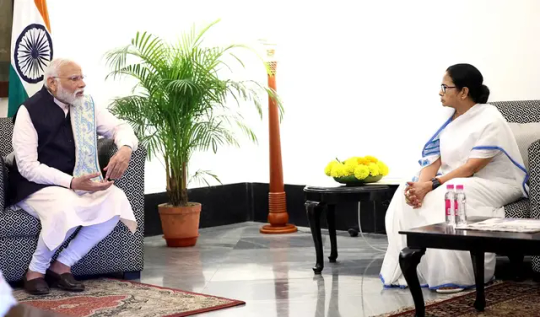
View On WordPress
#CM West Bengal#latest news in hindi#Mamata Banerjee#Narendra Modi#NEET Exam#NEET परीक्षा#PM#नरेंद्र मोदी#पीएम#ममता बनर्जी#सीएम पश्चिम बंगाल#हिंदी न्यूज़
0 notes
Text
West Bengal : बंगाल में नौकरी खोने वाले शिक्षकों के लिए कानूनी सेल बनाएगी भाजपा
West Bengal : शुक्रवार को पश्चिम बंगाल के बर्धमान-दुर्गापुर में प्रधानमंत्री मोदी ने एक रैली को संबोधित किया। इस रैली में संबोधन के दौरान पीएम मोदी ने कहा कि बंगाल भाजपा एक अलग कानूनी सेल बनाएगी, जो उन वास्तविक शिक्षकों को कानूनी मदद देगी, जिनकी नौकरी स्कूल सर्विस आयोग के घोटाले में चली गई है। Badrinath dham : मुख्य सचिव ने बदरीनाथ पहुंचकर पुनर्निर्माण कार्याे का लिया जायजा भाजपा ईमानदार…

View On WordPress
0 notes
Text
#nano plant case#nano केस में हुई Tata Motors की बड़ी जीत#टाटा मोटर्स को मिलेगा 766 करोड़ रुपए का जुर्माना#nano plant in west bengal#share market news today#stock market news in hindi#stock market news in india#share market news
0 notes
Text
DA Hike latest Update: DA/DR जबरदस्त उछाल के साथ, महंगाई भत्ता AICPIN 12 महीने के टॉप पर
Please read our new post.
दोस्तों आप सभी का स्वागत है हमारे वेबसाइट Mr. Indian Politics पर। आपको जानकर खुशी होगी कि AICPIN पिछले 12 महीने का रिकॉर्ड तोड़ते हुए जबरदस्त उछाल पर है जिसके चलते महंगाई भत्ते में जबरदस्त उछाल देखने को मिलने वाला है। जैसा कि आप सभी जानते हो जुल��ई, 2023 से मिलने वाला महंगाई भत्ता 46% बन चुका है, मात्र घोषणा होनी बाकी है और जनवरी 2024 के लिए पहले ही महीने का जो अखिल भारतीय उपभोक्ता मुद्रा सूचकांक…

View On WordPress
#7th pay commission#7th pay commission karnataka#7th pay commission kya hota hai#7th pay commission latest news today#7th pay commission latest news today 2023#7th pay commission news#7th pay commission pay matrix#da from december 2023#da from January 2024#da hike#da hike 2023#da hike central government 2023#da hike for central government employees#da hike in july 2023#da hike news#da hike news today#da latest update#da latest update in hindi#da latest update in west bengal#da latest update today#da new update#wb da latest update
0 notes
Text
#khabar samay#bengal politics#political update#siliguri khabar samay#khabar samay news#khabar samay hindi news#khabar samay siliguri
0 notes
Text
An old image of a monk serving food to Muslims has resurfaced in social media posts that falsely claimed it shows a Hindu priest who was killed by Islamists during the recent unrest in Bangladesh. AFP previously debunked false claims with the same image and identified the monk, while his religious organisation confirmed the photo was taken in India.
"Swami Nitai Das Ji Swami of ISKCON temple in Bangladesh... he organised Iftar for Muslims in the temple for 30 days. The same Muslims burned the temple down and killed the swami," read the Hindi-language claim shared on Facebook on August 7.
Iftar is a meal taken by Muslims to break their fast during the holy month of Ramadan.
The photo shows a monk serving food to a number of men wearing traditional Muslim dress.

There have been multiple reports of violence against religious minorities in Bangladesh since prime minister Sheikh Hasina was ousted on August 5 following protests led by university students.
More than 450 people were killed during the protests that ultimately led Hasina to flee the country, AFP reported (archived link).
Rights groups and diplomats in Bangladesh have since raised concerns over reports of attacks on minorities. The Bangladesh Hindu Buddhist Christian Unity Council said at least 10 Hindu temples have been attacked by "miscreants", AFP reported.
The image of the monk was shared with similar claims elsewhere on Facebook here and on social media platform X here.
But the photo, circulating online since 2016, does not show a Hindu priest killed in Bangladesh.
Photo from India
AFP previously debunked the photo in 2021 when it circulated online with a similar claim, after deadly violence in Bangladesh over the desecration of the Quran during a Hindu religious festival.
Combined reverse image and keyword searches on Google found the photo published in an article by UCA News on July 4, 2016 (archived link).
The headline reads: "Hindu group hosts fast breaking event for Muslims."
The caption with the photo mentions the event was held at an International Society for Krishna Consciousness temple in Mayapur, a neighbourhood in Nadia district of eastern West Bengal state (archived link).
Below is a screenshot comparison of the image in the false post (left) and the picture shared in the 2016 article (right):
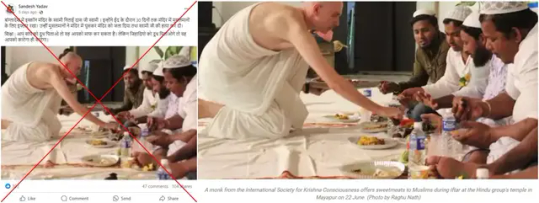
Yudhistir Govinda Das, ISKCON's communications director in India, told AFP in November 2021 that the photo was taken in West Bengal.
Das identified the monk pictured as Ivan Antić, also known as Chaitanya Nitai Das, an ISKCON devotee from Croatia.
AFP in 2021 also contacted Antić, who confirmed he was the monk in the photo.
10 notes
·
View notes
Text
Assorted thoughts on culture, generational trauma, racism, queerness and where they intersect for me
My family is from Bangladesh. Or they used to be. All of my great-grandparents were born there. At least 3 of my grandparents were born there as well. My mother travelled there on the back of trucks transporting hay. The town, practically the village, my father grew up in, is in Bangladesh.
There's this story my mother tells me. When I was around three years old, we were in a Bengali restaurant in New York and I was so happy to meet fellow Bengalis that I immediately started to speak Sylheti. They gave us a discount for that. called me Khuki and told my parents how nice it was to speak in the language of their home with someone once again.
Another time, another restaurant. This one is in London. I'm not three anymore. I don't speak Sylheti anymore either. They say I forgot because I had no one to speak it with. I don't even speak proper Bangla. It's now Bengali with a dash of Hindi. This time when we enter the restaurant, I don't approach the servers. They approach us and say how nice it is to find a fellow Bengali in the wild. We complain about how we're tired of white people food. My mother wishes she had macher jhol. The servers tell her to wait and bring out a plate of their own dinner. She cries as she eats it. Tears of joy and solidarity.
I'm twelve years old and for the first time, I decide to relearn my culture. I join a summer class, pencil in hand, ready to learn how to read and write all over again. I want to read my mother's magazines, the Feluda comics that she read out loud to me as a child. It paid off, but not in the way I expected, my mother fighting with my father, grabbing hold of my hand two days later as we boarded the aeroplane back to her father's house.
I'm 13 years old, on anti-depressants that I forgot to take some days, neurodivergence diagnosed, and learning more about myself each and every day. I come out as bisexual to my mom but do not tell her about my genderfluidity. Afraid of what she'll think when the daughter she always desired turns out to not be her daughter at all. We call my brother in Canada. He tells us about the people who shout slurs at him in the metro. We do not tell him that we are afraid that someday the slurs will turn into bullet wounds.
I'm fourteen years old, and my father's come to visit. It's his birthday so we travel to his parents' house. more than 4 hours away from ours. They greet us with barbed wire words on my grades, my brother's weight, my mother's inability to be a good wife. We smile through it all. I wonder how they can be so cruel. The people who cared for me when I was a child. The woman who named me now my worst enemy.
I'm fifteen years old now. My Bangla is clearer. Sharp vowels and clear consonants. It will never be rounded syllables of my childhood ever again. I learn of the Bengal partition in school. Learn how people killed each other in the name of freedom. I want to scream, "Amra shobai ek." We are all the same. We share the same culture, the same language but in different dialects, the same history. Stop killing, please. I'm tired of the violence and hatred, I say. This war started before I was born, will it continue after I'm dead as well?
I gathered the courage to google LGBTQ+ laws in Bangladesh today. And I realised something. I love my culture. I love my roots. I love this language, my ancestors, and every family member, even though sometimes I feel like there are too many to count. But I do not love what they have made of it. I saw the words splashed across the newspaper headlines, Anti - Queer laws still in place, Being gay is punishable with a life sentence in prison, a gay man is stoned to death in public and no one does anything to stop it. I do not cry. I've been doing nothing but crying for too long now.
Instead, I'm writing this. I'm writing this to tell everyone that it isn't over. I'm writing this to tell everyone that if I'd been born 413 km to the west exactly, I wouldn't be alive to write this post right now. I'm writing this because I am tired of our stories going untold, buried under layers of propaganda and zealotry. I'm writing this because people think my being Hindu, my being Indian, my being Bengali means that I cannot be queer.
Well sorry to prove you wrong. Because I'm still here. And I'm still kicking. And as long as I'm alive, I'm not going to stop. Neither will the thousands of others like me, telling their stories in a thousand different ways, fighting for their people in a thousand different ways.
So this one is for those still kicking.
We're Here
We're Queer
And we're ready to fucking fight.
#listen I was angry#so i made this#it probably makes no sense to anyone but me#but like that's fine#if i'm the only perosn who needs this#then at least I have it#but if you needed it to#that's fine as well#even if you don't relate to everything#because im probably the only person who'll ever relate to everything here#because im the only person who lived them#writers of tumblr#personal essay#writerblr#spilled ink#kismet ki kahaniya
12 notes
·
View notes
Text
Travel Sketches (Nov 2023 - March 2024)
Nov 2023.
Bishnumaya just turned 100 this October. She comes from Pokhari, about 15 kilometers from Mirik town. As we spoke, she recalled old memories, her expressions shifting as if reliving those moments. She seemed elsewhere, gazing past me into the distance, and then, as if continuing a conversation with herself, she said, “Nowadays people ask about caste when they meet someone, and how is that of any use?”
She described how, when she was small, there were no proper schools in her village. She learned to read and write, however little, by arranging corn kernels on the ground to form shapes that resembled letters and numbers. Reflecting on her long life, she added that everyone around her—friends her age and younger siblings—is dead, and she feels like a monster who swallowed them all.

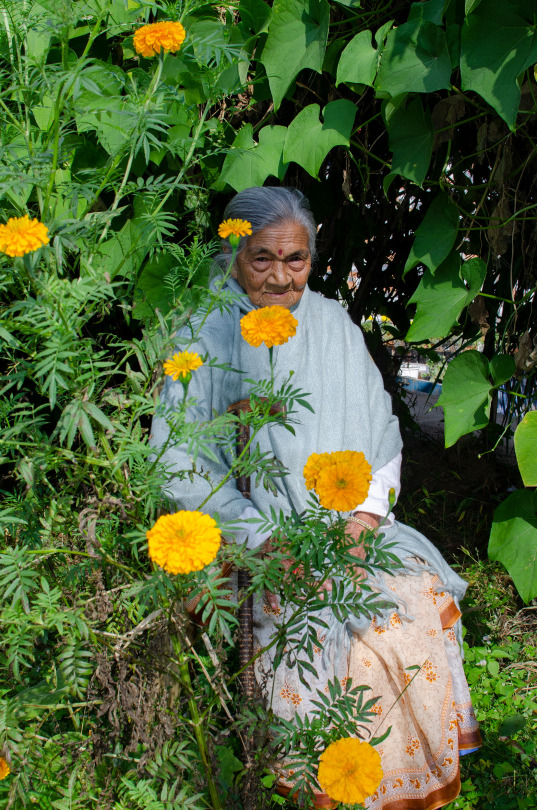
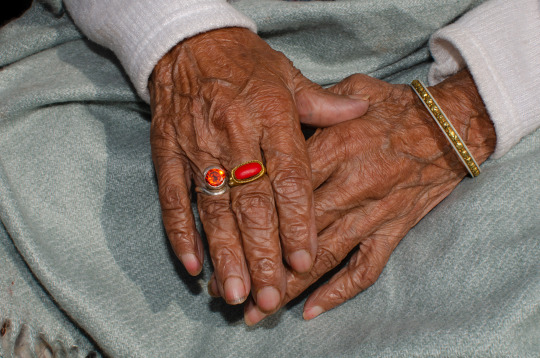
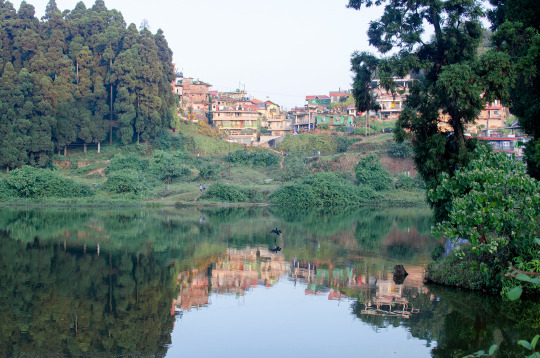
The sun is out, but it’s only warm where the light falls. The history of Mirik is reflected in its lake, which used to be a marshland. According to Wikipedia, the name Mirik comes from the Lepcha words Mir-Yok, meaning "place burnt by fire." It's very green now for a place that was once burnt.
A town fair is underway, offering a range of attractions: a Ferris wheel, flower park visits, fast food stalls, ice cream carts, horse and boat rides, live pop music, card game betting, balloon shooting, local bingo-type card games, and hoopla with prizes up for grabs. Some prizes are cash with notes of 20, 50, and 100 rupees.

——
For the past ten years, I haven't had a permanent home. When I wanted to sidestep the weight of planning and longed for comfort and familiarity, I returned to places I liked a little more than others: Auroville, Dharamshala, Shillong, Aizawl, Nagaland.
I like meeting new people and have formed what feels like extended families in some of these places. Since I have mostly felt free to move around, sometimes nostalgia of people or a time or a curiosity to see how things may have changed would draw me back to a place.
Earlier in August, while I was temporarily living in Auroville, I got a call about a six-month project called The Great Himalayan Exploration, a collaboration between UNESCO and Royal Enfield. The project aims to document the intangible cultural heritage of local communities in the Himalayan region of Northeast India.
My work on this trip specifically involved photographing the people behind various cultural practices and examining the ecosystems they exist in. To build context, I engaged in various methods, such as scanning old photos from people’s personal albums, taking photos of their living spaces, landscapes, and exploring archival resources. From November to April, we were in West Bengal, Sikkim, Tripura, Mizoram, Assam, Nagaland, and Meghalaya.
------

On our way back to Siliguri from Mirik, we made a lengthy stop near a tea estate. Lalita, from Tingling village, shared that she had spent two decades working on the estate, much like many other women from the village. Their collective hope was to earn a minimum of 500 rupees per day for their labor. Currently, they are receiving 250 rupees per day for an eight-hour shift.
------


Sanchamaya, 74, sits with her friend Bodhimaya in the front yard of her house in Darap, both lifelong farmers of the area and belonging to the Limbu community. They're nice and welcoming. It's our second day in Pelling, West Sikkim, and I've ended up at the wrong house. Today, we're supposed to see a drum dance(chyabrung) performance by local Limbu boys, which I'll catch later.
They talk in basic broken Hindi, with Shusan translating most of it. Sanchamaya leads me to the back of their house, where she proudly shows me trays of dried large cardamoms. Later, we'll visit her cardamom field. They also cultivate Mosambi, oranges, guavas, maize, peas, ginger, and onions. Sanchamaya spends her days with her friend, grandchildren, working in the fields, and cooking in the kitchen.
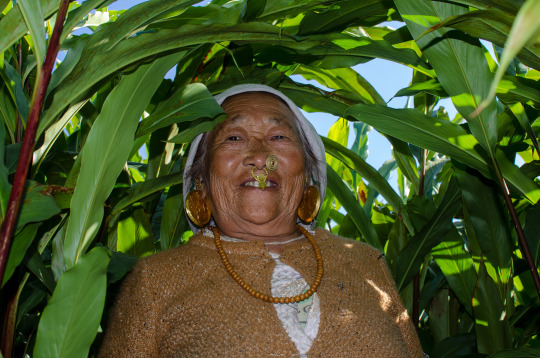

------
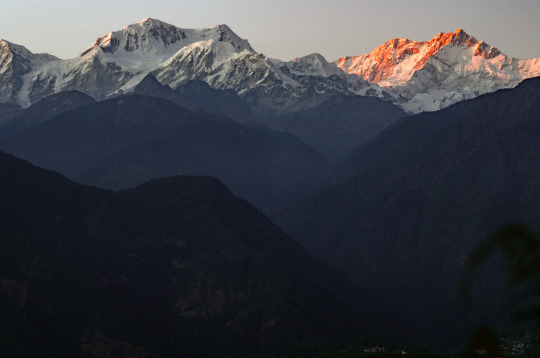

I visited Chuba village, 3 hours away from Gangtok, with Semeon from Haflong, Assam, a textile design graduate from NID and working at Sonam’s design studio called EchoStream based in Gangtok. Semeon was familiar with the village and the community I was there to meet. Arun Gurung and his wife, founders of Chubako, are endeavoring to revive an old tradition of sourcing wool from indigenous banpala sheep to make clothes. They operate a small cooperative called Chubako. In this village of 43 families, one person from each household now works for Chubako. (photo above: Arun Gurung, founder of Chubako)
(photo below: Designed by Sanskruti Shukla, co-created with the craft community of Chubako for Echostream, Gangtok)
Local stories of the craftspeople of Chuba are showcased and incorporated into wool through interactive workshops focused on storytelling and design development. The felted art rugs depict the flora and fauna of Sikkim.

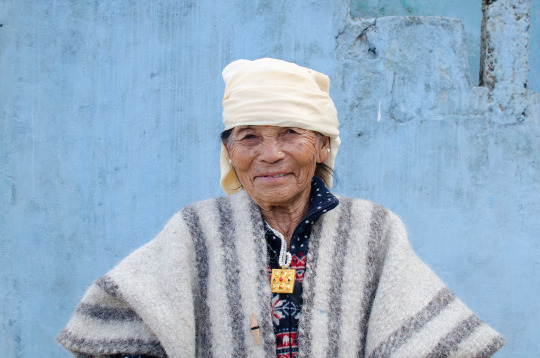
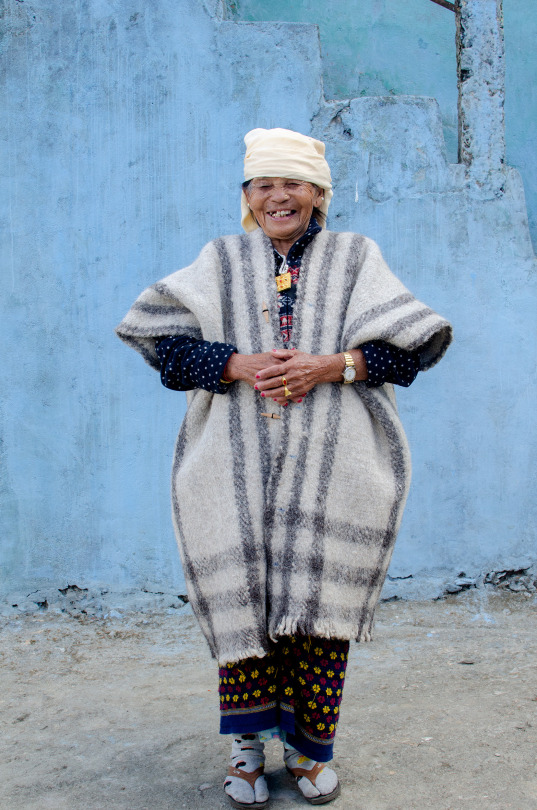
Gangamaya Gurung, 83, Arun Gurung's mother, lit up like a child when she saw Semeon. They shared a bond akin to best friends. Despite her age, Gangamaya remains active, tending to sheep, cutting grass, farming, and weaving. When asked about her leisure activties, she said, "eat, watch TV - eat, watch TV."
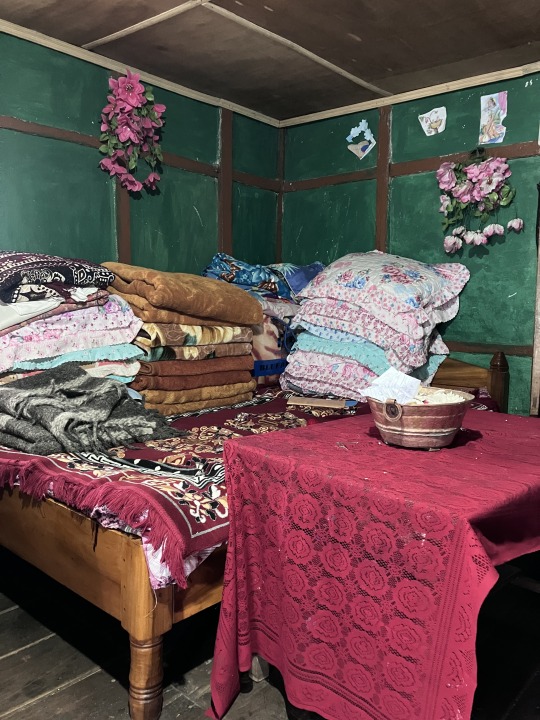

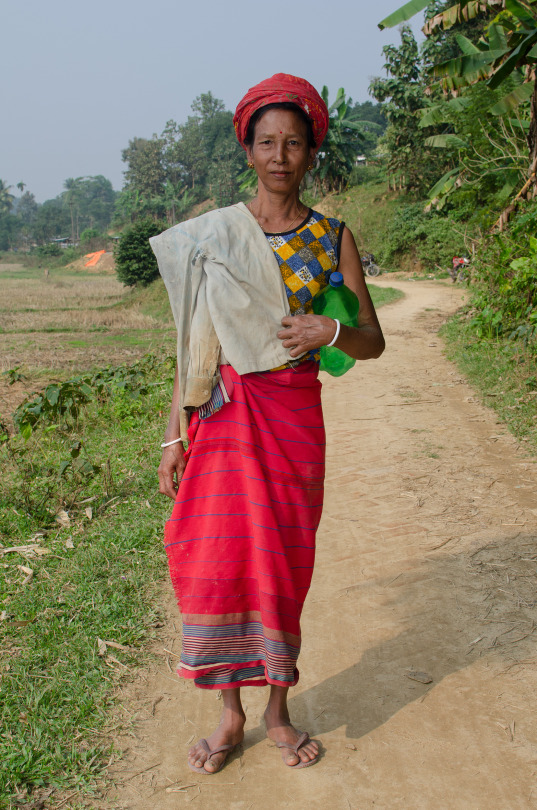
Sampati Debbarma, a farmer, returning from work in Takarjala, Tripura.
--------
Jan, 2024.
We have been out on this trip for 3 months. My thoughts scattered in a kind of bardo between the world I know and the world I am coming into contact with. I picture house fronts with flowers in Darjeeling, roads winding, the long cold rivers snaking toward mountains that seem no bigger than my thumb, the snow capped peaks shifting colours, the prayer flags in high altitudes and on house doors. Gangtok’s Lal Bazaar skateboarders flash by, a school in Tripura where a student lives on 700rs a month, nini bung tamo and 4 other sentences I learned in Kokborok nag me like a tune. Sidangcherra to Pecharthal to Panisagar to Damchara checkpoint we make our way from Tripura into Mizoram by road. I think about where I will be later in the summer and see a white fluffed cloud taking the shape of a growing tree far on the horizon.
——
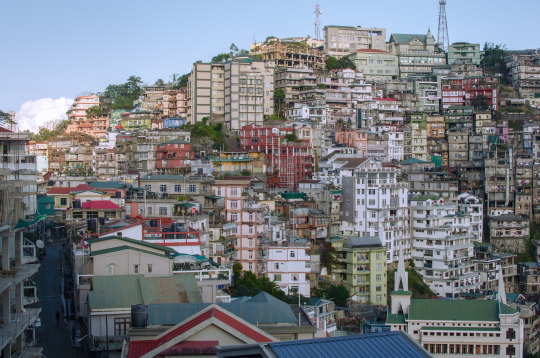
Krismas Ruaitheh(Christmas feast) at Khatla Presbyterian Church, Aizawl. This is my 3rd time in Aizawl. I used to go for dinners, sometime evening tea to my friend’s family house further up the road from the Khatla church. We are here to document the traditional community feast of the Mizos.

Priscilla is currently pursuing her BA in Political Science in Delhi, and she's home for the holidays. She was volunteering at Khatla Presbyterian Church where she and her friends were tasked with serving lemonade, a customary drink after the meal. For Priscilla, the most remarkable aspect of the feast is its longstanding tradition — dating back to pre-Christian times — where the entire community comes together to share its moments of joy and sorrow + they still use Changel Hnah (plantain leaves) — the traditional way to serve meals.
-----

On an idle walk one evening in Khatla, I find myself in a local thrift store and get invited to meet James Lalhmingliana. He is 80, one of the founding members of Aizawl's first bike club, Aizawl Thunders. He went to school at Sts. Edmund’s in Shillong.
In 1966, he joined the Mizo National Front uprising, fighting for freedom. He went underground for seven years, first in Arakan, Burma, then in 1969 to East Pakistan for shelter. "It was useless," he says. "We wasted our good years. When I came back, I was put in jail, but not for long."
He has been housebound for years due to his health.
———


At 8 am on a cold January morning, we arrive at Joonbeel Mela. (Joon and beel are Assamese terms for moon and wetland. The Tiwa community first organized this in the 15th century to exchange goods between indigenous tribal communities in Assam and the surrounding areas.)
It is known as the only fair in India where people still practice barter, exchanging goods like fish, sweet potatoes, yam, homegrown vegetables, turmeric, chili, kali miri, and rongalau.
Over a few hours, I have brief interactions with people from Jagiroad, Pamlatar, Deosal, Sira, Changsari, Potia Pathar, Bengenabari, Palahguri, ulukunchi, morigaon, Nagaon, Saru Amli, Belguri, Damal, and places as far as Langpih, mawlynnong in Meghalaya. No one refuses a photo.
—
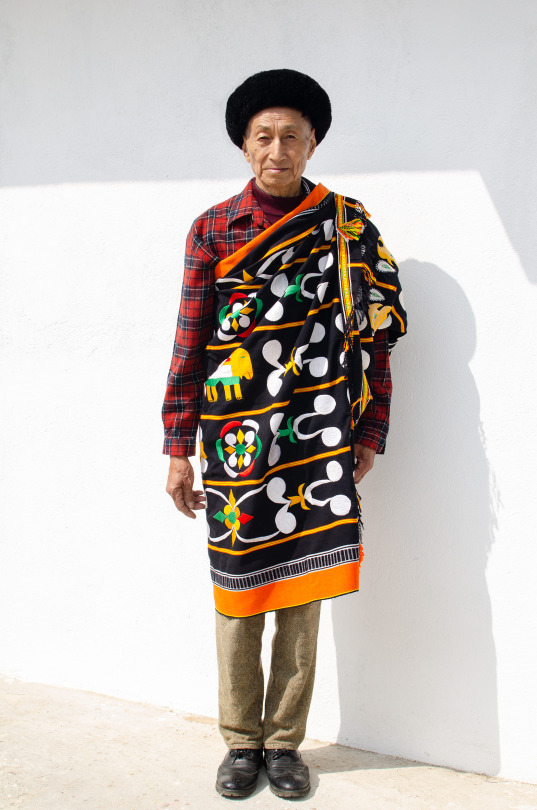
This is my fifth time in Nagaland. I first came here ten years ago and stayed at Kevesho's home. He is the father of the Tetseo Sisters, a well-known folk group of four sisters from Nagaland.
Kevesho Tetseo, son of Nülhüprü Tetseo was born in 1950s in Thüvopisümi village, Phek District, Nagaland. Initially schooled in the village, he finished his HSLC at Government High School in Kohima and graduated from Kohima College in Arts. He worked in the Education Dept. for sometime and now retired. Active in cultural music, Chokri language preservation, and in church choir since his youth.
(Tati - - a single string musical instrument which is used as an accompaniment with singing of li- indigenous songs by the Chakhesang Nagas.)
Kevesho learned how to make Tati from observing elders in his village when he was young and has done Tati making work since 1990s and a good number of it has been produced till date by him including improvising it for longer life by using steel wires as strings.
He tells me, the woven shawl he is wearing in the picture is "thipiqhü". It is the most prestigious shawl (indigenous cloth) among many traditional clothes of the Chakhesang tribe. It is a shawl they wear with humility and honour.
“Nagaland is my home and I love my culture, its rich traditional heritage, and the natural beauty.”
-----
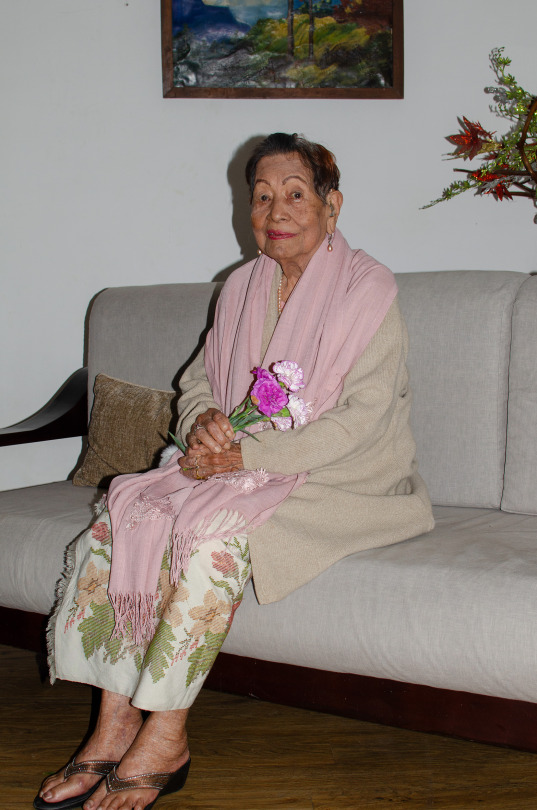
Daisy Yaden was born in Zotlang, Mizoram. She studied at the Welsh Mission School in Mission Veng, Aizawl. She will turn 98 this June. She learned to weave shawls on a backstrap loom, stitching, and baking from her mother, often baking cakes in the fireplace. She taught in the interiors of Nagaland, in places like Noklak and Changtongya. She started her career by teaching people self-sufficiency—how to cook, make jams and pickles—skills she picked up from a British magazine called Woman’s Own. She used to compose little tunes for children at Sunday school. She loves flower gardening and her favourite film is "Gone with the Wind."
Photographed at her house in Duncan, Dimapur.

I am sitting with Marian, Daisy's daughter, at her house in Duncan. Marian, now 75, lived in Bombay from 1970 to 2012. She went to college there and worked as an air hostess with Air India for 34 years. In 2012, she returned to Nagaland. We agreed to meet again for lunch and look at her old photo albums.
(below: Marian,16, in Kohima trying a sari for the first time / in Santa Cruz, Bombay in the 80s with James Ferreira and friends)



——-

Khinchi is Christian, and Sindri is Songsarek, belonging to one of the last animism practising communities. I learned a few words in Achik: Khading bo, Methela, Namja, and Manja. Here I am in the extended kitchen space at Sindri's hut, in Sadolpara, Dadenggre, where they are taking a break from cooking lunch.
-----
First published in Hindustan Times June '24
1 note
·
View note
Text
Haryana was part of the Kuru Kingdom during the Vedic era during 1200 BCE.
Haryana has been inhabited since the pre-historic period. Haryana was part of the Indus Valley civilization during the Bronze Age period. The ancient sites of Rakhigarhi and Bhirrana are some of the oldest Indus Valley civilization sites.(5) Haryana was part of the Kuru Kingdom during the Vedic era during 1200 BCE.(6)(7)(8) The area now Haryana has been ruled by some of the major empires of India. The Pushyabhuti dynasty ruled the region in the 7th century, with its capital at Thanesar. Harsha was a prominent king of the dynasty.(9) The Tomara dynasty ruled the region from 8th to 12th century. The Chahamanas of Shakambhari defeated them in the 12th century.(10)
Harsha Ka Tila mound, ruins from the reign of 7th century ruler Harsha.
Lal kot built by Anangpal Tomar in 1052
Portrait of Hem Chandra Vikramaditya, who fought and won across North India from the Punjab to Bengal, winning 22 straight battles.(11)
In 1192, Chahamanas were defeated by Ghurids in Second Battle of Tarain.(10) In 1398, Timur attacked and sacked the cities of Sirsa, Fatehabad, Sunam, Kaithal and Panipat.(12)(13) In the First Battle of Panipat (1526), Babur defeated the Lodis. Hem Chandra Vikramaditya claimed royal status after defeating Akbar's Mughal forces on 7 October 1556 in the Battle of Delhi. In the Second Battle of Panipat (1556), Akbar defeated the local Haryanvi Hindu Emperor of Delhi, who belonged to Rewari. Hem Chandra Vikramaditya had won 22 battles across India from Punjab to Bengal, defeating the Mughals and Afghans. Hemu had defeated Akbar's forces twice at Agra and the Battle of Delhi in 1556 to become the last Hindu Emperor of India with a formal coronation at Purana Quila in Delhi on 7 October 1556. In the Third Battle of Panipat (1761), the Afghan king Ahmad Shah Abdali defeated the Marathas.(14)
In 1966, the Punjab Reorganisation Act (1966) came into effect, resulting in the creation of the state of Haryana on 1 November 1966.(15)
Distribution
Haryanvis within Haryana
See also: Demography of Haryana
The main communities in Haryana are Gujjar, Jat, Brahmin, Agarwal, Ahir, Chamar, Nai, Ror,Rajput, Saini, Kumhar, Bishnoi etc.(16) Punjabi khatri and Sindhi refugees who migrated from Pakistan had settled in large numbers in Haryana and delhi.
Haryanvi diaspora overseas
(icon)
This section needs expansion. You can help by adding to it. (July 2021)
See also: Indian disaspora overseas
There is increasingly large diaspora of Haryanvis in Australia, Canada, Singapore, New Zealand, Saudi Arabia, UAE, UK, USA, etc.
In Australia, the community lives mainly in Sydney and Melbourne, has set up Association of Haryanvis in Australia (AHA) which organise events.(17)
In Singapore, the community has set up the Singapore Haryanvi Kunba organisation in 2012 which also has a Facebook group of same name. Singapore has Arya Samaj and several Hindu temples.
Culture
Main article: Haryanvi culture
Language
Main article: Haryanvi language
Haryanvi, like Khariboli and Braj is a branch of the Western Hindi dialect, and it is written in Devanagari script.(18)
Folk music and dance
Main article: Music of Haryana
Folk music is integral part of Haryanvi culture. Folk song are sung during occasion of child birth, wedding, festival, and Satsang (singing religious songs).(2) Some haryanvi folk songs which are sung by young woman and girls are Phagan, katak, Samman, Jatki, Jachcha, Bande-Bandee, Santhene. Some songs which are sung by older women are Mangal geet, Bhajan, Sagai, bhat, Kuan pujan, Sanjhi and Holi. Folk songs are sung in Tar or Mandra stan.(19) Some dances are Khoriya, Chaupaiya, Loor, Been, Ghoomar, Dhamal, Phaag, Sawan and Gugga.(19)
Cuisine
Haryana is agricultural state known for producing foodgrains such as wheat, barley, pearl millet, maize, rice and high-quality dairy. Daily village meal in Haryana consist of a simple thali of roti, paired with a leafy stir-fry (saag in dishes such as gajar methi or aloo palak), condiments such as chaas, chutney, pickles. Some known Haryanvi dishes are green choliya (green chickpeas), bathua yogurt, bajre ki roti, sangri ki sabzi (beans), kachri ki chutney (wild cucumber) and bajre ki khichdi. Some sweets are panjiri and pinni prepared by unrefined sugar like bura and shakkar and diary. Malpua are popular during festivals.(20)
Clothes
See also: History of clothing in the Indian subcontinent and History of Textile industry in India
Traditional attire for men is turban, shirt, dhoti, jutti and cotton or woollen shawl. Traditional attire for female is typically an orhna (veil), shirt or angia (short blouse), ghagri (heavy long skirt) and Jitti. Saris are also worn. Traditionally the Khaddar (coarse cotton weave cloth) is a frequently used as the fabric.(21)(22)
Cinema
See also: Haryanvi cinema and List of Haryanvi-language films
The First movie of Haryanvi cinema is Dharti which was released in 1968. The first financially successful Haryanvi movie was Chandrawal (1984) which spurted the continuing production of Haryanvi films, although none have been as successful.(23) Other films such as Phool Badan and Chora Haryane Ka followed with only about one out of twelve films being profitable at the box office.(23) In 2000, Aswini Chowdhary won the Indira Gandhi Award for Best Debut Film of a Director at the National Film Awards for the Haryanvi film Laddo.(24) In 2010 the government of Haryana announced they were considering establishing a film board to promote Haryanvi-language films.(25)
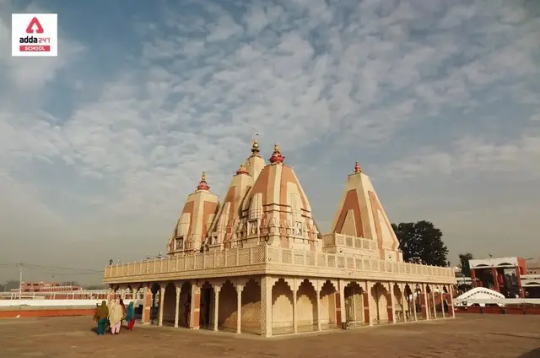
2 notes
·
View notes
Text
'The Kerala Story' box office collection day 5: The film continues its glorious run on Tuesday | Hindi Movie News - Times of India
‘The Kerala Story‘ released on Friday but the film’s collections have seen an upward trend post its first weekend. The film has surrounded itself into controversies after its ban in West Bengal and that has in turn helped it to gain momentum. The audience is now curious to see what it is about and thus, flocking to the theatres to watch the film.After doing extra-ordinary on Monday, the…

View On WordPress
4 notes
·
View notes
Text
Will immerse our medals into Ganga, sit on hunger strike at India Gate, say protesting wrestlers
India's top wrestlers, including Sakshee Malikkh, Vinesh Phogat and Bajrang Punia, said they will immerse their medals into river Ganga on Tuesday and then sit on an indefinite hunger strike at India Gate. Since April 23, the grapplers have been protesting against WFI chief Brij Bhushan Singh over sexual harassment allegations levelled against him.

India’s top wrestlers, who were recently detained and removed from their protest site at Delhi’s Jantar Mantar, have said they will immerse their medals into river Ganga in Haridwar on Tuesday and then sit on an indefinite hunger strike at India Gate.
Wrestlers including Sakshee Malikkh, Bajrang Punia and Sangeeta Phogat, put out a statement on their respective Twitter handles, saying the grapplers would go to Haridwar and immerse their medals into river Ganga at 6 pm.
“These medals are our lives, our souls. There would be no reason to live after immersing them into the Ganga today. We will stage a hunger strike until death at India Gate after that,” read the statement in Hindi.
Since April 23, the grapplers have been protesting against Wrestling Federation of India (WFI) chief Brij Bhushan Sharan Singh over sexual harassment allegations levelled against him by female athletes, including a minor.
Dramatic visuals emerged from the wrestlers’ protest march as hundreds of cops and paramilitary personnel blocked their advance towards Parliament House on May 28. As the protesters tried to breach the security cordon, a fierce tussle broke out — the wrestlers and cops pushed, shoved and grappled with one another.
In the joint statement, the wrestlers said the Prime Minister “who calls us our daughters”, did not even once show his concern for the grapplers. “Rather, he invited the ‘oppressor’ (Brij Bhushan Singh) to the inauguration of the new Parliament building. He even posed for photographs in bright white clothes. We have been stained by this brightness,” it said.
The statement said, “Where is the place for the daughters of India? Have we been reduced to people indulging in mere sloganeering or do we have an agenda to come to power?”
“We are going to immerse these medals into river Ganga… The more sacred we consider the Ganga, the more sacredly we had achieved these medals by toiling hard. These medals are sacred for the whole country and the right place should be in the Ganga itself,” it said.
The protest, which started on April 23, at Jantar Mantar saw heartbreaking visuals on the day of the new Parliament building’s inauguration when Delhi Police cracked down on them in the midst of their march. An FIR was lodged against the wrestlers for taking out the march to the new Parliament building, mentioning that their protest would hamper “national prestige”.
The wrestlers, who resumed their sit-in last month after the first round of protests in January, have been demanding the arrest of Brij Bhushan Singh, also a BJP MP from Uttar Pradesh’s Kaisarganj.
Opposition leaders, including Congress’s Rahul Gandhi, Priyanka Gandhi Vadra, Delhi Chief Minister Arvind Kejriwal, and West Bengal Chief Minister Mamata Banerjee have condemned the Centre over their inaction against Brij Bhushan Singh.
The WFI chief dismissed the sexual harassment allegations levelled against him by some female grapplers.
2 notes
·
View notes
Text
'नैतिक और राजनीतिक हार के बाद भी अहंकार कायम है', NEET, Manipur, Bengal Train Accident को लेकर मोदी पर बरसे खड़गे
कांग्रेस अध्यक्ष मल्लिकार्जुन खड़गे ने सोमवार को लोकसभा सत्र से पहले मीडिया को अपने संबोधन में आपातकाल का जिक्र करने लेकिन एनईईटी ‘पेपर लीक’ मामले, मणिपुर हिंसा या पश्चिम बंगाल ट्रेन दुर्घटना पर नहीं बोलने के लिए पीएम नरेंद्र मोदी पर निशाना साधा। खड़गे ने पीएम पर “प्रथागत शब्दों” का अत्यधिक उपयोग करने का आरोप लगाया, जबकि देश प्रासंगिक मुद्दों पर उनकी टिप्पणियों का इंतजार कर रहा है। उन्���ोंने…
View On WordPress
#latest news in hindi#mallikarjun kharge#Manipur Violence#neet#PM Modi#West Bengal train accident#एनईईटी#पश्चिम बंगाल ट्रेन दुर्घटना#पीएम मोदी#मणिपुर हिंसा#मल्लिकार्जुन खड़गे#हिंदी न्यूज़
0 notes